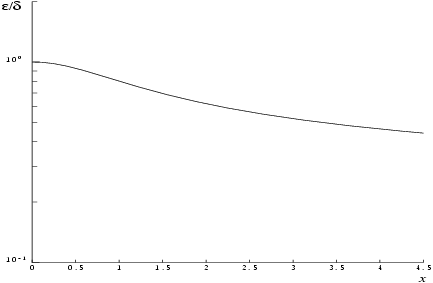PDF version (NAG web site
, 64-bit version, 64-bit version)
NAG Toolbox: nag_specfun_arcsinh (s11ab)
Purpose
nag_specfun_arcsinh (s11ab) returns the value of the inverse hyperbolic sine, , via the function name.
Syntax
Description
nag_specfun_arcsinh (s11ab) calculates an approximate value for the inverse hyperbolic sine of its argument, .
For
it is based on the Chebyshev expansion
For
it uses the fact that
This form is used directly for
, where
, and the machine uses approximately
decimal place arithmetic.
For
,
is equal to
to within the accuracy of the machine and hence we can guard against premature overflow and, without loss of accuracy, calculate
References
Abramowitz M and Stegun I A (1972) Handbook of Mathematical Functions (3rd Edition) Dover Publications
Parameters
Compulsory Input Parameters
- 1:
– double scalar
-
The argument of the function.
Optional Input Parameters
None.
Output Parameters
- 1:
– double scalar
The result of the function.
- 2:
– int64int32nag_int scalar
unless the function detects an error (see
Error Indicators and Warnings).
Error Indicators and Warnings
None.
Accuracy
If
and
are the relative errors in the argument and the result, respectively, then in principle
That is, the relative error in the argument,
, is amplified by a factor at least
, in the result.
The equality should hold if
is greater than the
machine precision (
due to data errors etc.) but if
is simply due to round-off in the machine representation it is possible that an extra figure may be lost in internal calculation round-off.
The behaviour of the amplification factor is shown in the following graph:
Figure 1
It should be noted that this factor is always less than or equal to one. For large
we have the absolute error in the result,
, in principle, given by
This means that eventually accuracy is limited by
machine precision.
Further Comments
None.
Example
This example reads values of the argument from a file, evaluates the function at each value of and prints the results.
Open in the MATLAB editor:
s11ab_example
function s11ab_example
fprintf('s11ab example results\n\n');
x = [-2 -0.5 1 6];
n = size(x,2);
result = x;
for j=1:n
[result(j), ifail] = s11ab(x(j));
end
disp(' x arcsinh(x)');
fprintf('%12.3e%12.3e\n',[x; result]);
s11ab example results
x arcsinh(x)
-2.000e+00 -1.444e+00
-5.000e-01 -4.812e-01
1.000e+00 8.814e-01
6.000e+00 2.492e+00
PDF version (NAG web site
, 64-bit version, 64-bit version)
© The Numerical Algorithms Group Ltd, Oxford, UK. 2009–2015
